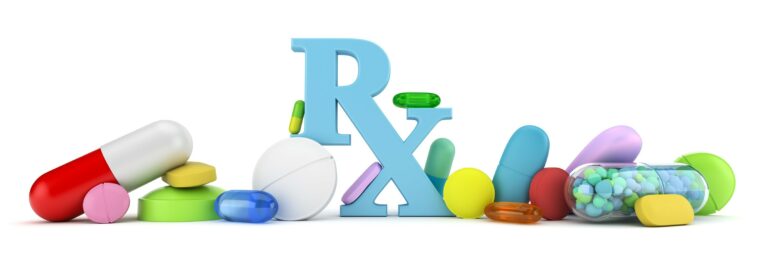
An antidote is a substance that can counteract a form of poisoning. The term antidote is a Greek word meaning “given against”. It is therefore necessary for every nurse to familiarize with common antidotes in in the hospital setting in case of emergency.
| Antidote | Indication | Mode of Action |
| acetylcysteine (Mucomyst) | Acetaminophen/ Tylenol/ Paracetamol | Restores depleted glutathione stores and protects against renal and hepatic failure. |
| Activated charcoal | Non-specific poisons except cyanide, iron, lithium, caustics and alcohol. | Absorption of drug in the gastric and intestinal tracts. Interrupts the entero-hepatic cycle with multiple dose. |
| albuterol inhaler, insulin & glucose, NaHCO3, kayexalate | Potassium | |
| anticholinesterase agents | Neuromuscular blockade (paralytics) | |
| atropine sulfate or pralidoxime | Anticholinesterase | Competitive inhibition of muscarinic receptors. |
| Benzylpenicillin | Amanita phalloides (Death cap mushroom) | Not known; partial protection against acute hepatic failure; may displace amatoxin from protein-binding sites allowing increased renal excretion; may also inhibit penetration of amatoxin to hepatocytes. |
| Calcium salts | Fluoride ingestion | Rapidly complexes with fluoride ion. |
| deferoxamine | Iron | Deferoxamine acts by binding free iron in the bloodstream and enhancing its elimination in the urine. |
| digibind digoxine immune fab | Digoxin | Binds molecules of digoxin, making them unavailable for binding at their site of action on cells in the body. |
| dimercapol, edetate calcium, disodium, | Lead | Chelation of lead ions and endogenous metals (e.g., zinc, manganese, iron, copper). |
| diphenhydramine (Benadryl) | Extrapyramidal symptoms (EPS) | A potent antagonist to acetylcholine in muscarinic receptors. |
| flumazenil | Benzodiazepines | Reverses the effects of benzodiazepines by competitive inhibition at the benzodiazepine binding site on the GABAA receptor. |
| fomepizole | Ethylene glycol | A competitive inhibitor of the enzyme alcohol dehydrogenase found in the liver. This enzyme plays a key role in the metabolism of ethylene glycol and methanol. |
| glucagon | Beta blockers and calcium channel blockers | Stimulates the formation of adenyl cyclase causing intracellular increase in cycling AMP and enhanced glycogenolysis and elevated serum glucose concentration. |
| Glucose (Dextrose 50%) | Insulin reaction | Dextrose (the monosaccharide glucose) is used, distributed and stored by body tissues and is metabolized to carbon dioxide and water with the release of energy. |
| Heparin | Ergotamine | Reverses hypercoagulable state by interacting with antithrombin III. Used in combination with vasodilator phentolamine or nitroprusside to prevent local thrombosis and ischemia. |
| Hydroxocobalamin | Cyanide | Forms cyanocobalamin, a non-toxic metabolite that is easily excreted through the kidneys. |
| leucovorin calcium | Fluorouracil | |
| Methotrexate | Protects the healthy cells from the effects of methotrexate while allowing methotrexate to enter and kill cancer cells. | |
| Magnesium sulfate | calcium gluconate | |
| mesna | Cyclophosphamide | A “chemoprotectant” drug that reduces the undesired effects of certain chemotherapy drugs. |
| Methylene blue | Chemical producing severe methemoglobinemia. Ifosamide-induced encephalopathy. | Reduces methemoglobin to hemoglobin. |
| nalmefene or naloxone | Opioid analgesics | Prevents or reverses the effects of opioids including respiratory depression, sedation and hypotension. |
| naloxone (Narcan) | Narcotics | Naloxone is believed to antagonize opioid effects by competing for the µ, κ and σ opiate receptor sites in the CNS, with the greatest affinity for the µ receptor. |
| Neostigmine | Anticholinergics | Anticholinesterase which causes accumulation of acetylcholine at cholinergic receptor sites. |
| Nitrite, sodium and glycerytrinitrate | Cyanide | Oxidizes hemoglobin to methemoglobin which binds the free cyanide and can enhance endothelial cyanide detoxification by producing vasodilation. |
| Penicillamine | Copper, gold, lead, mercury, zinc, arsenic | Chelation of metal ions. |
| phentolamine (Regitine) | Dopamine | Regitine produces an alpha-adrenergic block of relatively short duration. It also has direct, but less marked, positive inotropic and chronotropic effects on cardiac muscle and vasodilator effects on vascular smooth muscle. |
| phyostigmine or NaHCO3 | Tricyclic antidepressants | A reversible anticholinesterase which effectively increases the concentration of acetylcholine at the sites of cholinergic transmission. |
| Phytomenadione (Vitamin K.) | Coumadin/Warfarin | Bypasses inhibition of Vitamin K epoxide reductase enzyme. |
| protamine sulfate | Heparin | Protamine that is strongly basic combines with acidic heparin forming a stable complex and neutralizes the anticoagulant activity of both drugs. |
| Pyridoxine | Isoniazid, theophylline, monomethyl hydrazine. Adjunctive therapy in ethylene glycol poisoning. | Reverses acute pyridoxine deficiency by promoting GABA synthesis. Promotes the conversion of toxic metabolite glycolic acid to glycine. |
| Snake anti-venin | Cobra bite | Neutralizes venom by binding with circulating venom components and with locally deposited venom by accumulating at the bite site. |
| Sodium Bicarbonate | Iron | Prevents convertion of ferrous to ferric. |
| Cardiotoxic drug affecting fast sodium channel (TCA, cocaine) | Decreases affinity of cardiotoxic drugs to the fast sodium channel. | |
| Weak acids | Promotes ionization of weak acids. | |
| Chlorine gas inhalational poisoning | Neutralization of hydrochloric acid formed when chlorine gas reacts with water in the airways. | |
| Sodium thiosulphate | Cyanide | Replenishes depleted thiosulphate stores by acting as sulfur donor necessary for the conversion of CN-O to thiocyanate through the action of sulfur transferase enzyme rhodanese. |
| Thiamine | Alcohol, Wernicke-Korsakoff Syndrome | Reverses acute thiamine deficiency |
| Adjunctive in ethylene glycol | Enhances detoxification of glyoxylic acid. | |
| Vitamin C | Chemicals causing methemoglobinemia in patients with G6PD deficiency | Reduces methemoglobin to hemoglobin. |